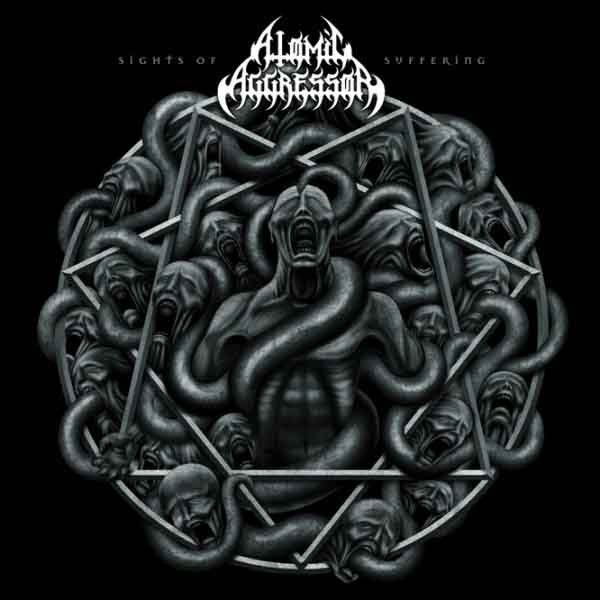Calling a band “technical” — not to be confused with musicianship as popular circles frequently do — creates general indifference among those accustomed to seeing this term used as a selling point. The industry generally uses the term for bands that cannot compose meaningful songs and so encrust them in adornments of musical acrobatics, creating artistic Potemkin villages which offer a cornucopia of musical fireworks on the surface but emptiness beneath. Many believe that musicality is only valid if the artist consciously intended to give the music a certain technical quality. This could not be further from the truth.
The best music has often comes from technically competent artists, but this does not mean that their music is guided by a handbook of rules, but the other way around: they use technical flair to elaborate on the ideas that motivate their music. When an musician has a superior talent for organizing notes into melodies, aligning melodies into harmonies and building sections that flow and speak to one another as seemingly essential parts of a whole, this process can be reverse-engineered by a clever and knowledgeable analyst. But like software reverse engineering itself, we only arrive at technical explanations about the originating commands that give the result its nature, not the programmer’s feelings, train of thought or the content they hope to communicate through their art.
Morbid Angel Altars of Madness is lauded as as a young genius’ masterpiece born out of raging emotion and unprecedented innovation in the then-young genre of death metal. Only new or superficial fans of the genre are oblivious to the achievements of this album that go well beyond mere historical relevance. Whether or not Trey Azagthoth planned each twist with the implied theoretical knowledge behind them is not important, although we can assume he may not have because such fervor as these pieces present is only possible coming from the deepest well of human emotion. Yet scrutinizing of them at several levels reveal logical explanations for the impact, drive and fluid development that they showcase.
As a short example we may take a look at “Chapel of Ghouls”. The song itself can be explained as using E major as its main or home key. As in classical music it ventures into the parallel minor and uses off-key passing tones for color. The most important of this is the fact that the guitars in the recording are tuned in E-flat standard tuning, which means that the repetitive muted strumming of the open low string consists of strumming the D (enharmonic equivalent of E flat) note, the seventh in the scale of E major. This gives the chugs a malevolent and dissonant feel. Another thing that should be mentioned is that the first two riff clusters in Chapel of Ghouls are quite unstable, each being in period form (antecedent and consequent phrases which mirror each other, but only the second one resolving). These riffs do not resolve convincingly (they do not land on either the tonic or the dominant when the consequent cadences), giving these both a satisfying feel and a need to continue and be completely resolved which appears to the listener as a will forward instead of a complete thought. This resolution is achieved on the third riff which finally leads to the tonic, but does not rest there, avoiding the typical full-stop feeling by switching into the relative minor (thereby using a flattened third and sixth which sound like off-key passing tones in the context of the major setting) and syncopating the rhythm while an atonal solo blazes above. And so the song is carried on with the mark of genius that cannot be now denied even by those who do not share a personal preference for the song. The songs in this album are not even remotely atonal or even overall dissonant; they make heavy use of the latter with striking effect while the atonality is reserved for solos which mark peaks and tornadoes of raw emotion that are never out of place here and which seem to be born out of the depths of this music.
Atomic Aggressor Sights of Suffering presents us with something that would be best described as a tribute to Altars of Madness-era Morbid Angel. But unlike Morbid Angel, Atomic Aggressor’s songs do not show Azagthoth’s structural cleverness and talent for directing and channeling emotion unavoidably towards strategic points in the song where powerful emotion surges. In fact, it is because this band is bent on sounding like early Morbid Angel that they are completely oblivious to the subtlety of the original composition and thus just manage to place riff after riff which sound like a more retro (sounding a little on the speed metal side at times) version of who they are trying to imitate. The vocals make this intention to imitate even more palpable not only in terms of the style of the growls but the way certain passages are emphasized or rounded off by grunts which in this far weaker music only manage to sound comical, especially if one is familiar with the original band. There is not much to say about this album because it is no more and no less than a bland, third-rate imitation.
https://www.youtube.com/watch?v=y_Lq2WEqj1o
Tags: atomic aggressor, death metal, morbid angel



This is really very good and it all makes sense. I have often wondered whether precociously talented musicians, like Trey Azagthoth, recognized the nuances of the music they were making in their earliest years. Even presuming they may not have been up to speed on music theory (and it’s just that, a presumption), being born with the musical ear and mind that they were, they must have been able to recognize, at least feeling-wise, notions of will and resolution and conflict while they were composing the songs.
Wow, this fucking rips!!
What a poor review, you just saw, but didn’t ear… that why sites likes this are what they are… no credibility